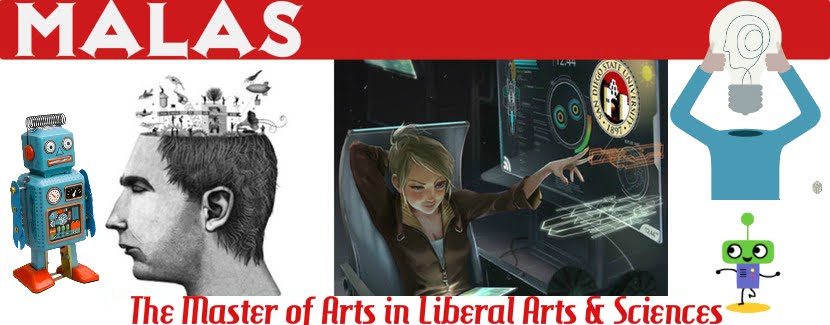 |
| Carson Poole at Balboa Park, San Diego |
Tuesday, January 25, 2022
How to Prepare Sharing Your Work at an Academic Conference: MALAS's Carson Poole on her AGLSP 2021 Conference Experience
Wednesday, January 5, 2022
New Spring 2022 MALAS Seminar with Professor Andrés Aguilar! Community Activism Through Arts Practice!
New Spring 2022 MALAS Seminar with Professor Andres Aguilar!
Community Activism Through Arts Practice!
More info here: https://sunspot.sdsu.edu/schedule/sectiondetails?scheduleNumber=22285&period=20222&admin_unit=R
New Spring 2022 MALAS Seminar: Parábolas ópticas / Optical Parables : Latin American/Latinx Literature, Art, Photography, & Cinema with Professor Bill Nericcio
New Spring 2022 MALAS Seminar: Parábolas ópticas / Optical Parables : Latin American/Latinx Literature, Art, Photography, & Cinema with Professor Bill Nericcio
Note that the course can be taken in three "flavors" depending on what program you are with (or your curricular needs) at SDSU:
This is a Comparative Literature class, a MALAS seminar, and a Latin American Studies class, but it should appeal to any and all folks who are curious about the literatures and cultures of the Americas working their magic both north and south of the U.S./Mexico border).
The title of the class comes from a 1931 photograph by Manuel Álvarez Bravo entitled “Optical Parable/[Parábola Opticas]” – you can see a facsimile of it here opposite (and a self portrait of Bravo below). The photo can be read as a deep semiotic meditation on the nature of visual representation; but it can also be read as a joke, a bit, a gag – a photo of an optometrists shop printed in reverse (literally, a sight gag).This dialectic between the deeply intellectual and the comedic will run through our class as we probe texts that are literary, photographic, painted, filmed, streaming, and more.
No expertise in Latin American or Latinx (Chicana/o/x, Boriqua/o/x, etc) literature or culture is expected or presumed nor should anyone worry if they’ve never studied film, photography, graphic narrative, or art at the collegiate level. The only requirement or prerequisite for this class is curiosity and a little drop of imagination!
The final lineup of works is still a little in flux. Readings / Screenings / Art include works by Alfonso Cuarón (y tu Mamá tambien), Myriam Gurba (pictured below), Hector Ortega, Gabriel García Márquez, Flor Garduño, Junot Diaz, Cristina Rivera Garza, Raoul Peck, Gilbert Hernandez, Tina Modotti, Orson Welles (!), Alex Espinoza, yours truly, Salvador Plascencia, and other surprises!
Saturday, January 1, 2022
New MALAS Seminar Spring 2022 -- Meso American Ceramics with Carlos Figueroa-Beltran
This course examines the iconography, context, and function of the visual arts of the Mesoamerican world, with the idea of developing works of art inspired by the Mesoamerican civilizations from pre-contact times to the present.
Through this study, we hope to inspire a new work of art for the campus, created by students from both Latin American Studies and the Ceramics Area in the School of Art and Design, discussing issues of appropriation and representation as we explore ancient works as inspiration for a contemporary work of art.
My name is Carlos Figueroa-Beltran. I work at the Center for Latin American Studies as a lecturer and graduate advisor. My academic background varies from archaeology, anthropology, ethnohistory, intercultural studies, and environmental sciences. As an archaeologist, I have excavated several sites in Mesoamerica, such as Teotihuacan and Tenochtitlan (the ancient capital of the Aztec empire).











